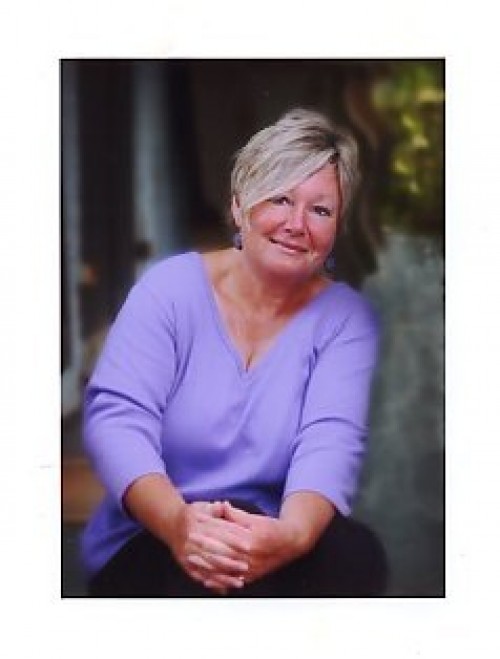
Nine ways to spend the Dog Days
May 2, 2012
Ray Saadi: La. Bicentennial Reading
May 2, 2012On June 5, Venus will shade a speck of the sun from Earth’s view, appearing as a small black dot as the world’s people witness an event that won’t happen again until every creature living now has perished.
Transits of Venus always happen in pairs, the two separated by eight years. The sequence doesn’t repeat for 105 years. It last occurred June 8, 2004, and it won’t happen again until Dec. 10, 2117.
A Schriever man with a 2-and-a-half-acre astronomy playground and top-notch stargazing equipment is anticipating next month’s universal rarity.
“I will be fortunate enough to see it twice in my lifetime,” says Ken Stage, the 68-year-old owner and curator of St. George Observatory off Main Project Road. “There will be people born on June 6 that will die – hopefully, at 90 years of age and die at a natural cause – but they won’t see the transit of Venus. I get to see two of them.”
The transit will be visible from North America beginning at about 4 p.m. The miniscule eclipse ends a little more than 6 and a half hours later, last visible from Europe.
Outside of the rarity, the event doesn’t hold much significance for Stage. But for a man who has been “mesmerized” with the universe since he was a child and for someone who has cultivated a center for teaching children the ways of the universe, it’s not something he’ll miss.
Stage opened his observatory, which is private, in 1999. Over time Stage has enhanced the facility with enormous telescopes – one has a 10-inch refractor – a 100-pound meteorite, numerous filters to better view the sun and moon and about 300 experiments he conducts with his audiences.
Math is the ultimate language of relativity and perspective, and it’s a tool Stage relies on to illustrate the vast cosmos and demonstrate the gulf between planetary knowledge and otherworldly intrigue.
One of particular wonder is “an object known as Quasar,” in the Virgo constellation. Quasar can be seen through a telescope, Stage says, something amazing considering it is located 2 billion light years (or 11 septillion, 749 sextillion, 203 quintillion, 532 quadrillion, 800 trillion miles) away.
If Quasar was located 33.78 light years away from Earth, it would shine as brightly from our planet as the sun does now, Stage says. The sun, viewed from the same distance, would “appear as a dim point of light in the night sky,” he says.
Stage’s compound is one of a few observatories in the state. Stargazing facilities in Shreveport and Baton Rouge are public, something Stage says he hasn’t pursued because of his “agenda.”
“Do you think LSU would let me hang this here if they were funding the observatory?” he asks as he reveals and points to a listing of the Ten Commandments hanging in the lecture hall.
“I am a person of faith. I’ve studied the universe for 50-something years now, and every thing points to intelligent design. … It is the precision of the celestial mechanics.”
Still, the public is welcome at St. George, so long as individuals schedule appointments. The observatory opens Fridays at 7 p.m. and Saturdays at noon. Admission costs $9 per student/senior, $10 per adult, and overnight campers are welcome at $15 per head.
Stage grew up in rural Cottonport, in Avoyelles Parish, the site where his wonder began to form. As a child in a pre-street light time, he remembers lying in his backyard and looking at the sky. “It was like black velvet with these white diamonds you could pluck,” he says.
Stage, in order to not enlist with the U.S. Army after he received a draft notice, became celestial navigator for the Coast Guard, earning a second-class quartermaster rank. After he left the military, Stage moved to Schriever to ease his commute to Morgan City, where he did similar work as a tugboat captain.
In this span, curiosity drove him to learn more about the universe.
The way he tells it, it was a childlike, foundational question that drove him to learn more. He noticed the color differences between stars Betelgeuse (red), Sirius (blue-white) and Alberio (gold), and started searching for answers.
“Why are the stars different colors? Well, it’s temperature variance,” Stage says. “Are they the same size? No. Do they live the same lifetime, in years? No. So one question, when you get the answer, then you have another question. It’s momentum, and you never stop learning. I’m a lifelong learner.”
Now, after re-opening the facility following a 22-month hiatus, Stage enthusiastically and simplistically bestows his knowledge upon visitors, most of whom are students at local schools.
“The universe is not complicated once you understand it,” he says. “I’ve done all the research and studying so I can make it simple for you.”
Stage teaches based on a curriculum he crafted with input from curators and scientists from throughout the country. His lessons touch on meteor showers, comets, nebulae, the sun and more, always interweaving history with mind-bending facts and common sensibilities.
He has also brought in numerous guest speakers, including Charlie Duke, a moonwalker; Story Musgrave, an astronaut who made repairs to the Hubble Telescope; Holly Gilbert, a doctor of astrophysics; and Rich Graham, a Blackbird pilot of the fastest and highest flying aircraft recorded.
“I stand right there, and I say, ‘Tell me what you see,’” Stage says. “A lot of times at these events, a child will walk away and not see anything and go off to another telescope. But here, they’re going to tell me what they see and when they see it, I give them the explanation.”
Although Stage is the most visible, he’s not the only local astronomer.
Gene Dalton oversees a 61-member Internet community of amateur sky-explorers. The Bayou Stargazers registered as a Yahoo group in 2007, and they use the group’s message board to discuss their sightings and coordinate viewing parties.
The group schedules occasional outreach programs. Most recently, they used the grounds at the Main Branch Houma Library to stimulate local interest.
“At our events the enormous shadows of the great mountain ranges of the moon, the rings of Saturn, the four major moons of Jupiter and it’s equatorial belts draws a lot of reaction from the viewing public,” Dalton says. “For most it is their first time at the eyepiece of a telescope.”
Dalton recommends that amateurs begin by equipping themselves with a set of binoculars and a map of constellations. Once a person can get to know what they’re looking at and for, he or she can delve more deeply with higher magnifications, he reasons.
“A telescope is a time machine looking back millions or even billions of years, back to when our universe was a little younger,” Dalton says. “Because of the time travel of light, amateur telescopes are able to see galaxies as they were back several hundreds of millions of years ago and quasars as they were a few billion years ago.”
Dalton started sky watching in earnest about five years ago. For him, the decision to continue this hobby was an easy one.
“It was a want to know of knowledge,” Dalton says.
– editor@gumboguide.com
Ken Stage, owner and curator of St. George Observatory, demonstrates the power of channeled sunlight, which ignites a yardstick. It is one of 300 experiments Stage conducts for visiting children.








